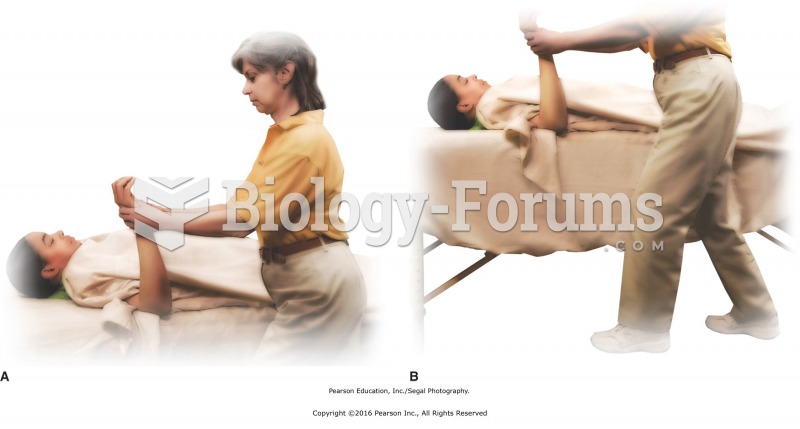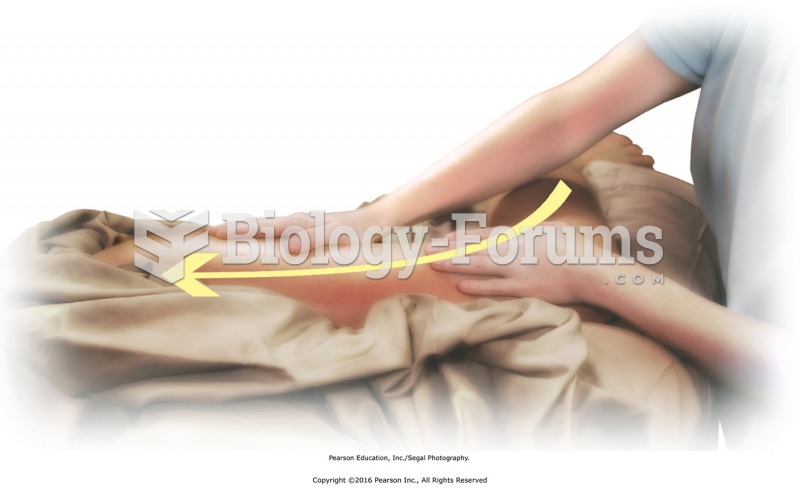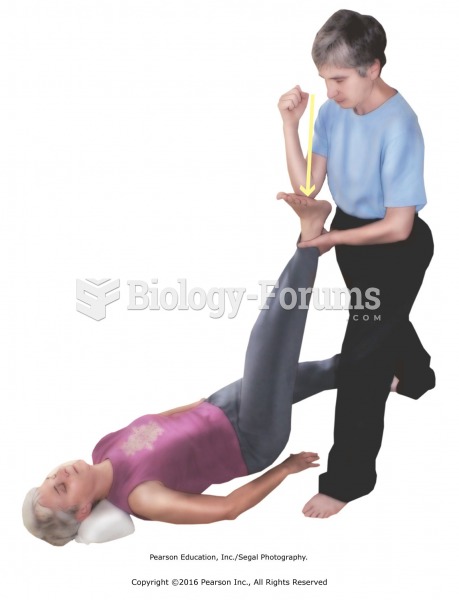|
|
|
The human body produces and destroys 15 million blood cells every second.
People with high total cholesterol have about two times the risk for heart disease as people with ideal levels.
The first successful kidney transplant was performed in 1954 and occurred in Boston. A kidney from an identical twin was transplanted into his dying brother's body and was not rejected because it did not appear foreign to his body.
Cutaneous mucormycosis is a rare fungal infection that has been fatal in at least 29% of cases, and in as many as 83% of cases, depending on the patient's health prior to infection. It has occurred often after natural disasters such as tornados, and early treatment is essential.
Calcitonin is a naturally occurring hormone. In women who are at least 5 years beyond menopause, it slows bone loss and increases spinal bone density.
 Good body mechanics when facing the head or foot of the table. A. Head and back in alignment. B. ...
Good body mechanics when facing the head or foot of the table. A. Head and back in alignment. B. ...
 Undrape top leg and apply warming effleurage to lateral leg, hip, and foot in distal to proximal ...
Undrape top leg and apply warming effleurage to lateral leg, hip, and foot in distal to proximal ...





